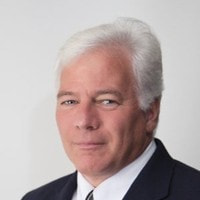
The California collision deductible waiver (CDW) waives your collision deductible if a negligent uninsured motorist hits you.
Written by: Laura Longero Executive EditorLaura is an award-winning editor with experience in content and communications covering auto insurance and personal finance. She has written for several media outlets, including the USA Today Network. She most recently worked in the public sector for the Nevada Department of Transportation.
Reviewed by: Laura Longero Executive EditorLaura is an award-winning editor with experience in content and communications covering auto insurance and personal finance. She has written for several media outlets, including the USA Today Network. She most recently worked in the public sector for the Nevada Department of Transportation.
Written by: Laura Longero Executive EditorLaura is an award-winning editor with experience in content and communications covering auto insurance and personal finance. She has written for several media outlets, including the USA Today Network. She most recently worked in the public sector for the Nevada Department of Transportation.
Reviewed by: Laura Longero Executive EditorLaura is an award-winning editor with experience in content and communications covering auto insurance and personal finance. She has written for several media outlets, including the USA Today Network. She most recently worked in the public sector for the Nevada Department of Transportation.
The California collision deductible waiver (CDW) is coverage that waives your collision deductible if a negligent uninsured motorist hits you.
According to the Insurance Information Institute, 16.6% of California drivers are uninsured making California 10th in the nation for uninsured drivers as of 2019 data — the most recent available.
In California, UMPD is only available if you don’t have collision coverage, according to Progressive. If your insurer offers collision damage waivers, you typically must choose between carrying either a CDW or UMPD coverage.
The CDW option with a personal auto insurance policy in California doesn’t charge the collision deductible when an uninsured or hit-and-run motorist, who is at fault, damages your vehicle. Coverage typically applies only when:
California car insurance law requires that non-commercial vehicle policies that provide bodily injury liability coverage for uninsured motorists must offer coverage for damage to the insured motor vehicle. The coverage must be up to the extent that you’re legally entitled to recover from the owner or operator of the uninsured motor vehicle and caused by an uninsured motor vehicle that either:
Payment shall not include damage to personal property or loss of use of a motor vehicle and shall not exceed the smaller of any of the following:
California insurers offer uninsured motorist property damage (UMPD) coverage. However, if you decide not to buy this coverage, you can be offered the collision damage waiver. Thus, if you don’t carry collision coverage on your auto, UMPD will pay up to $3,500 (not to exceed the value of the vehicle) for damages stemming from a person who’s at fault in the accident and is uninsured.
But you can only get UMPD if you don’t have collision coverage.
If you carry collision insurance coverage on your vehicle, you can purchase a collision deductible waiver in California. If you’re involved in an accident with an uninsured vehicle with CDW as part of your policy, your insurer will pay your collision coverage deductible for you.
Uninsured motorist property damage coverage normally pays for damages sustained by your covered vehicle when involved in an accident with an uninsured motorist. Usually, the following conditions must be met before uninsured motorist property damage coverage applies:
The insurance company’s liability to you will be limited to the following:
There are also cases when the CDW doesn’t apply. Here are a few of those instances:
The collision deductible waiver can help you in specific cases, but it’s not something that happens that often. CDW protection doesn’t cost much. You have to decide whether it’s worth it.
One way to add CDW protection without hitting your wallet is to raise your overall auto insurance deductible. If you decide to increase your deductible, make sure you have enough money set aside if you need to pay the deductible for an auto insurance claim. The last thing you want is not to be able to pay the deductible after a crash.
— Michelle Megna contributed to this story.

Ask the Insurance Expert
Laura is an award-winning editor with experience in content and communications covering auto insurance and personal finance. She has written for several media outlets, including the USA Today Network. She most recently worked in the public sector for the Nevada Department of Transportation.

Ask the Insurance Expert
John is the editorial director for CarInsurance.com, Insurance.com and Insure.com. Before joining QuinStreet, John was a deputy editor at The Wall Street Journal and had been an editor and reporter at a number of other media outlets where he covered insurance, personal finance, and technology.

Ask the Insurance Expert
Leslie Kasperowicz is an insurance educator and content creation professional with nearly two decades of experience first directly in the insurance industry at Farmers Insurance and then as a writer, researcher, and educator for insurance shoppers writing for sites like ExpertInsuranceReviews.com and InsuranceHotline.com and managing content, now at CarInsurance.com.

Ask the Insurance Expert
Nupur Gambhir is a content editor and licensed life, health, and disability insurance expert. She has extensive experience bringing brands to life and has built award-nominated campaigns for travel and tech. Her insurance expertise has been featured in Bloomberg News, Forbes Advisor, CNET, Fortune, Slate, Real Simple, Lifehacker, The Financial Gym, and the end-of-life planning service.
Ask our experts✓ Thank You, Your message has been received. Our team of auto insurance experts typically answers questions within five working days. Note that due to the volume of questions we receive, not all may be answered. Due to technical error, please try again later. ↻ Ask another question

Laura is an award-winning editor with experience in content and communications covering auto insurance and personal finance. She has written for several media outlets, including the USA Today Network. She most recently worked in the public sector for the Nevada Department of Transportation.
Copyright © 2024 CarInsurance.com. All Rights Reserved.Disclaimer: The advertisers appearing on this website are clients from which QuinStreet receives compensation (“Sponsors”). Compensation may impact where the Sponsors appear on this website (including the order in which they appear). Our websites do not, and are not intended to, provide a comprehensive list of all companies that may provide the products and services you are seeking.
*Carinsurance.com is not affiliated with any state or government agency. Advertised example rates are returned based on the driver's self-reported data, by comparing their current reported premium against their new policy premium, and the driver meeting certain criteria. Also, safe driver and other discounts may have been applied to achieve the advertised rate, which may not be available to the average consumer. Your actual quoted rate may vary greatly and may be subject to adjustment based on verification of your self-reported data.
Advertised example rates are returned based on the driver's self-reported data and the driver meeting certain criteria. Also, safe driver and other discounts may have been applied to achieve the advertised rate, which may not be available to the average consumer. Your actual quoted rate may vary greatly and may be subject to adjustment based on verification of your self-reported data.